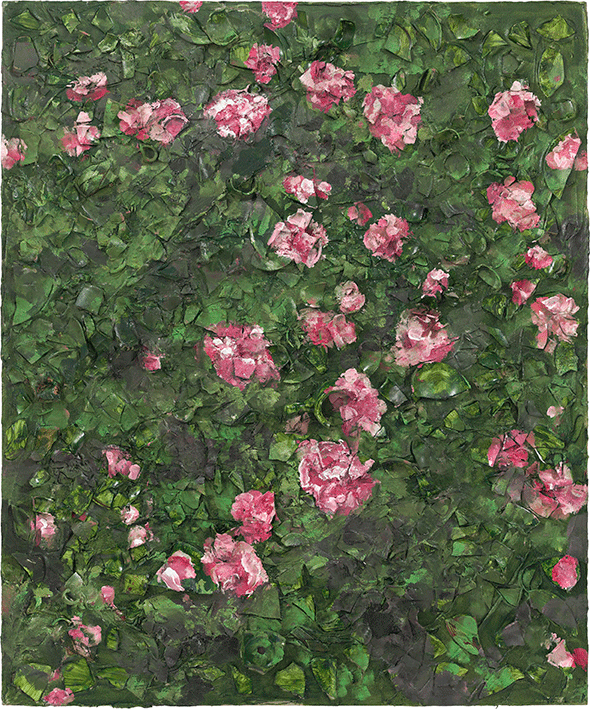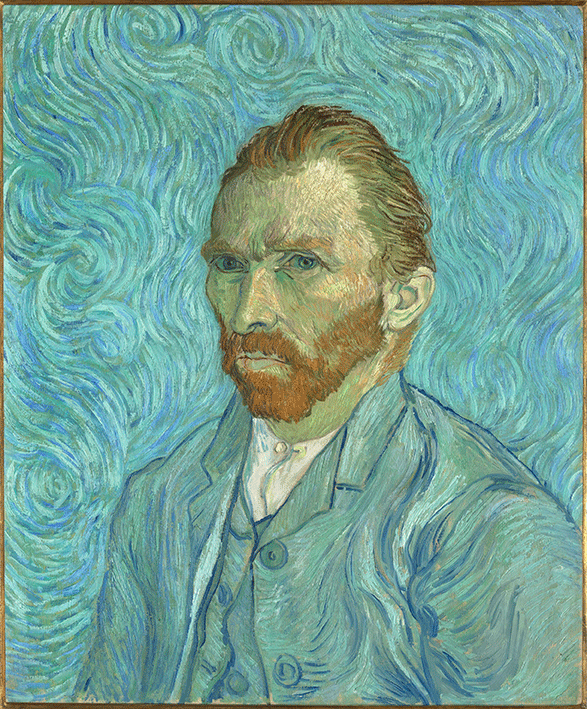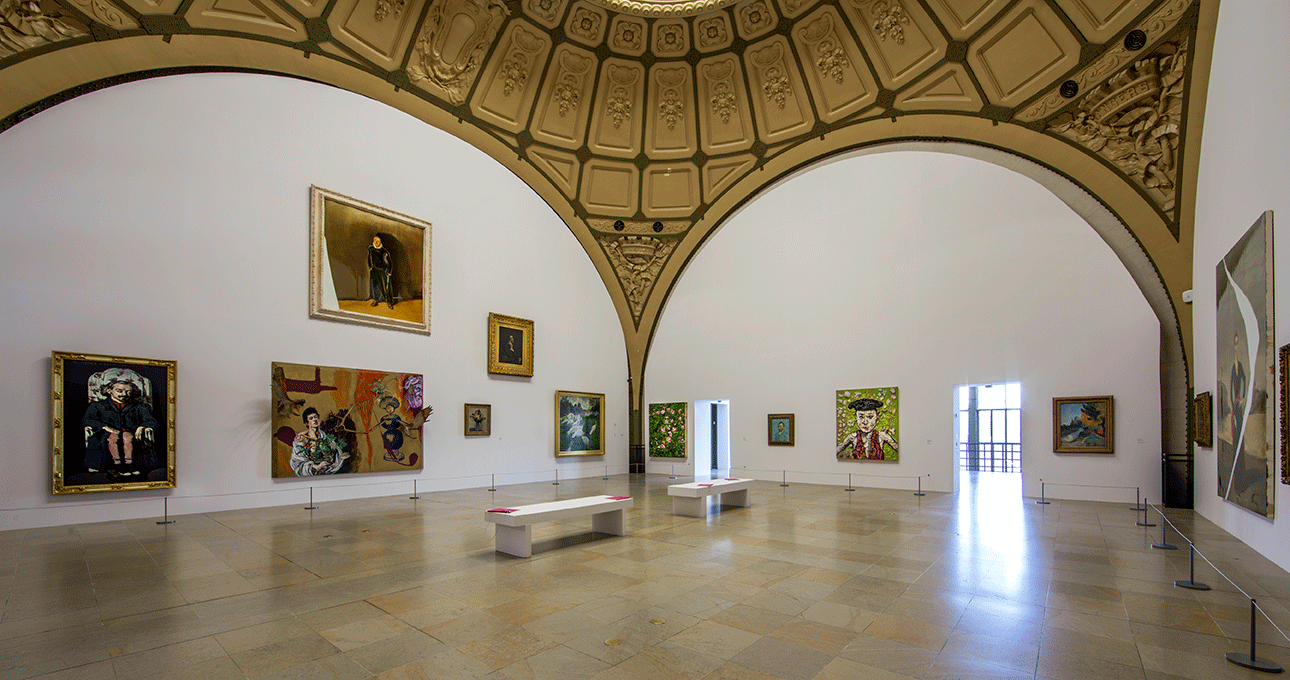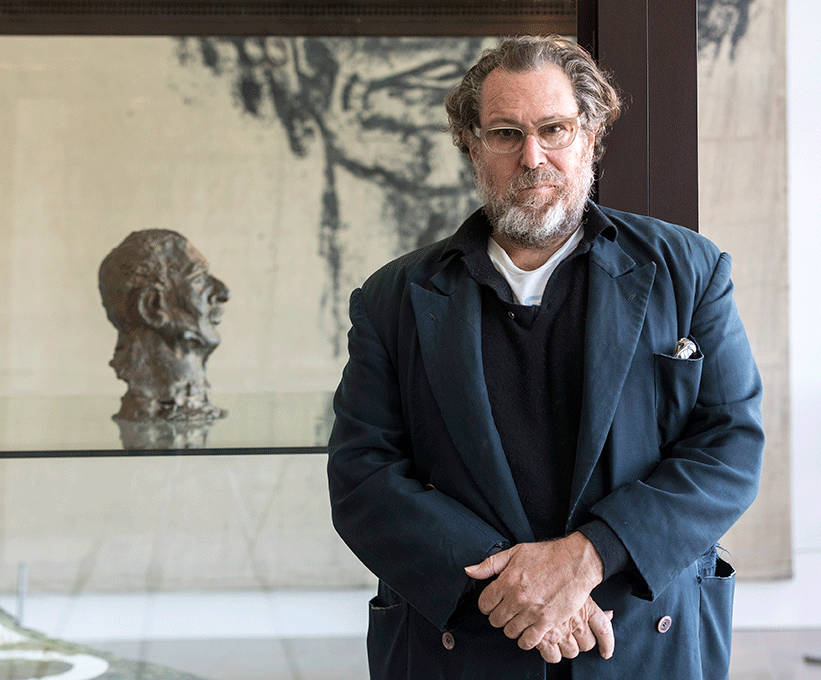« Features
Orsay Through the Eyes of Julian Schnabel
By Craig Drennen
Mid-December every year I convene with familiar art world veterans to hear about their favorite pieces from the Miami art fairs. And every year I’m told that the best thing seen was an obscure Picabia, a forgotten Fontana, or a newly available Alice Neel. In other words, within the froth of the 21st-century art fair environment it’s the flinty presence of the old that stands out. Remember this when visiting the first exhibition project from a new series hosted by the Museé d’Orsay in Paris. The museum has, according to its president Laurence des Cars, allowed American artist Julian Schnabel to assemble an exhibition from their collection at his discretion. The result is “Orsay Through the Eyes of Julian Schnabel” and it presents an unusual constellation of collection pieces orbiting several of Schnabel’s own works from elsewhere.
For the record, I have been sympathetic to Schnabel’s work over the years from the first time I saw his paintings at the 1988 Carnegie International. Those particular paintings, with titles like JMB and St. S, were made primarily by adding text to worn tarps and seemed appropriately muted as the 1980’s slumped to an end. I also remember the impact of seeing his Jane Birkin paintings in a Soho gallery in the early 1990s-paintings that I admire to this day. Still, I understood why many people felt cold about Schnabel. He appeared to embody a lush bouquet of questionable traits: grinding ambition, testosterone scale, and an emotionally tone deaf relationship to his subjects. His pieces often contained an odd brew of impatience and self-congratulation that looks prescient given the current political moment. The artworks were impatient in that they could have been made “better” given more time, but self congratulatory in the artist’s unfaltering belief that their rushed crudeness was more than good enough. Later in the 1990s Schnabel released one album of original music, now blissfully forgotten, before embarking on his film career. (Schnabel lists himself in the music credits of his 1996 film Basquiat, by the way.) Maybe that was partially the problem all along. In the new post-modern art world striving to hide its money addiction by leaning critically toward the virtues of the seminar room, Schnabel was an unrepentant Hollywood-style hustler.

Julian Schnabel, Rose Painting (Near Van Gogh's Grave) XVII, 2017, oil, plates and bondo on wood, 72” x 60.” © Julian Schnabel Studio. Photo: Tom Powel Imaging. © ADAGP, Paris 2018.
For this exhibition at the Museé d’Orsay Schnabel placed ten of his own pieces, mostly on loan from the artist himself and Swiss dealer Bruno Bischofberger, with a coterie of great (i.e. hegemonic male) painters: Daumier, Ribot, Carolus-Duran, Courbet, Gauguin, Toulouse-Lautrec, Manet, Fantin-Latour, Monet, Cézanne, and Van Gogh. The presumption is that the exhibition should be viewed as a family tree culminating with Schnabel himself. Let that fact sink in, that a contemporary artist was given access to one the great Modernist collections in France in order to organize an exhibition. And, from all available options, that artist chose to create a Genesis linage wherein Courbet begat Manet who, in turn, begat Monet, who then begat Van Gogh, and so on until it reaches the artist himself. This is not unprecedented for Schnabel. There is a scene from Basquiat taking place in Warhol’s studio where the camera looks past Jeffery Wright (as Basquiat), over the shoulder of David Bowie (as Andy Warhol), and onto a reproduction of Warhol’s 1982 silkscreen painting of Schnabel himself. That shot provoked a spurt of laughter from the Manhattan audience I was with during the initial release. Clearly, Schnabel’s impulse to insert himself into a line of heroic succession is not a new one.

Vincent van Gogh, Autoportrait, Saint-Rémy-de-Provence, 1889, oil on canvas, 25.6” x 21.33.” Paris, Musée d’Orsay, gift of Paul and Marguerite Gachet. Photo: Patrice Schmidt. © Musée d’Orsay, Dist. RMN-Grand Palais.
Schnabel’s own works in the exhibition are a mix that includes broken plate paintings such as Blue Nude With Sword from 1979,Tina in a Matador Hat from 1987, and Rose Painting (Near Van Gogh’s Grave) XVIII from 2017. The broken plate paintings are a key to Schnabel’s origin story and fired shots toward the reductivism and false modesty of minimalism, as well as the immaterial nuances of conceptual art. Those early plate paintings embraced collision over mannered harmony, which for a time may have felt like good medicine. The thick crust of plates echoed the ruins of a vague and distant history while creating a maddeningly difficult surface upon which to paint. Every move of the brush in Blue Nude With Sword is executed in opposition to the surface activity of the plates, and the majority of the plates have no paint at all as if a testament to this difficulty. Schnabel mentions in his catalog commentary that Blue Nude With Sword was the sixth plate painting he made and the first to include a human figure, without mentioning why this first figure is a mythic blue giant astride Doric columns, sword extended. The piece’s raised right panel makes the task of representation even more ridiculous, and does much to cloak Schnabel’s sweeping lack of drawing skills. Tina in a Matador Hat from eight years later shows Schnabel covering up more of the plates in order to form a more unified pictorial whole. Very few plate surfaces are revealed on the body or clothing of the subject, who in this instance is activist and designer Tina Chow. In Rose Painting (Near Van Gogh’s Grave) XVIII Schnabel slathered the broken plates so thoroughly with paint that none are left bare, and for the first time seems to actually use the shapes of the plate fragments to mimic and reinforce the subject. It’s as if form and content finally joined together for Schnabel in this work, and the result is a surprisingly predictable painting. On the other hand, Schnabel’s Exile from 1980 has aged well. The surface of Exile is composed from a wash of oxide yellow then bruised with gestural marks and shapes beneath representational images-a Caravaggio quote, a line rendering of a wooden toy, a Persian elder-and three real sets of antlers. Exile is a lively mess that likely exceeded its author’s intentions while accidently revealing the anxieties of a young artist on the brink of something.

Julian Schnabel, Tina in a matador hat, 1987, mixed media on wood, 72” x 60.2” x 7.” Bischofberger Collection, Männedorf-Zurich, Switzerland. © ADAGP, Paris 2018. © All rights reserved.
It is difficult to work up much steam in criticizing Schnabel’s curatorial decisions, because it seems almost as pointless as criticizing someone’s Pinterest board. What we see displayed are the things Schnabel had access to and wanted to see alongside his own work. Some pieces are installed too high on the wall. Two sculptures are in a side room instead of the main gallery, but nothing seems to matter much. Schnabel explains his selections in the catalog, but writes with the bored tone of a director’s commentary on a DVD. He claims that he selected the Carolous-Duran’s painting, The Convalescent, because of the subject’s red shirt. He selected Cézanne’s The Strangled Woman for its violence. He chose other works, such as Manet’s Portrait de Nina de Calais or Fantin-Latour’s Chrysanthemums in a Vase clearly because he envies what those artists did with paint. The most original selection might be Toulouse-Lautrec’s Panel for La Goulue’s Booth: Dance at the Moulin-Rouge where the massive scale, raw canvas, and brushy drawing provides a clear antecedent to Schnabel’s own approach-or at least mirrors his taste.
However, the focus of the exhibition is, without question, Van Gogh’s Self-portrait from 1889, paired beside Schnabel’s Tina in a Matador Hat for the purposes of comparison. Van Gogh’s painting is 25 ½ x 21 ¼ inches and Schnabel’s is 72 x 60 x 7 inches, yet in the catalog Schnabel describes them as “pretty much the same.” Anyone who has observed Van Gogh’s early career, or who has visited the Van Gogh museum in Amsterdam, recognizes how much sustained effort the Dutch artist dedicated to training his eye and hand. Self-Portrait shows Van Gogh at mature command of his craft. Brushstrokes swirl out from his head as if he is a radiating isotope. Marks shorten and harden to describe the artist’s face, a face anchored by the probing intensity of this stare. The left eye closest to us has a pinprick of light that enters the top of the iris then exits the bottom as a glow. The staring face looks arch and wounded, a cracked lip revealing recent deprivations. The physical texture of Van Gogh’s painted picture plane gently slows viewer perception before allowing it to move into the illusory space beyond it. Looking at this painting is like to looking through a rain speckled window, your perception lingering on surface water drops before looking past them to the view beyond, then back. It does not pay to be hyperbolic when describing art but the Van Gogh painting is a little miracle. The Schnabel painting, very decidedly, is not.

Exposition “Orsay vu par Julian Schnabel,” installation view. © Musée d’Orsay. Photo: Sophie Crepy Boegly.
All of this suggests that if Schnabel had selected first-rate works from all of the other artists, and not just Van Gogh, the validation of his own accomplishments would be far more difficult. It would also pull the crux of the exhibition away from the Van Gogh connection. This exhibition opened on October 10, 2018. Schnabel’s film about Van Gogh, At Eternity’s Gate, premiered at the Venice International Film Festival five weeks prior on September 3, 2018. It was shown again at the New York Film Festival on October 12, 2018. Standing in the galleries of the Museé d’Orsay one is confronted with the searing thought that the entire enterprise-exhibition, catalog, and programming-might simply be one component of a broad strategy to promote the film. Or, perhaps even more cynically, the museum found an artist with an impending international film release to publicize their collection and newest exhibition series. Either way, it seems that we’ve entered a new era of compromise.
Craig Drennen is an artist living in Atlanta and a 2018 Guggenheim Fellow. His most recent solo exhibition was at the Museum of Contemporary Art of Georgia. His work has been featured in Art in America, Artforum and The New York Times. He teaches at Georgia State University, served as dean of the Skowhegan School of Painting and Sculpture and was a board member of Art Papers magazine. Since 2008, he has organized his studio practice around Shakespeare’s Timon of Athens.




































Leave a Reply
You must be logged in to post a comment.